Birding and beaching with the family on Isla Palma resort, Colombia
My wife thought she had a cunning plan
In my last post I mentioned a mystery Myiarchus (I shall give the answer below) on Isla Palma, Colombia where I spent some of our family holiday. A two km long coral island with snow white beaches. A tropical all inclusive paradise resort with free drinks and too much food and possibly totally devoid of life birds for myself. This was the cunning plan of my wife. And indeed, I was very happy to forget about birds for most of the time, and spend more time with my daughters Luciana and Anahi and my wife E. Little would they know that after the five nights on the island I would have seen one life bird and a new bird for my South America list.
As it turned out, the fauna on this little island was far from poor. It was a zoo, with the only difference that there were no cages for most of the fauna. Imagine walking through the mangrove spotting Black Howler Monkeys, White-tailed Deer, Collared Peccary and Central American Agouti, while Blue-and-Yellow and Scarlet Macaws make racous fly-overs and both Keel-billed and Chestnut-mandibled Toucans peak out among the branches of the large trees. In the tidal pools around 150 Great Flamingos strutted in pink plumes. Check out these pics – all photographs are of “free” animals.
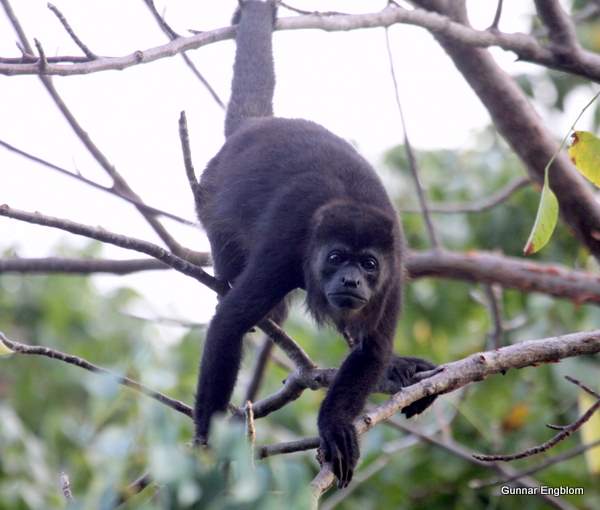 Black Howler Monkey Allouatta palliata
Black Howler Monkey Allouatta palliata
 Central American Agouti Dasiprocta punctata
Central American Agouti Dasiprocta punctata
 White-tailed Deer Odocoileus virginianus
White-tailed Deer Odocoileus virginianus
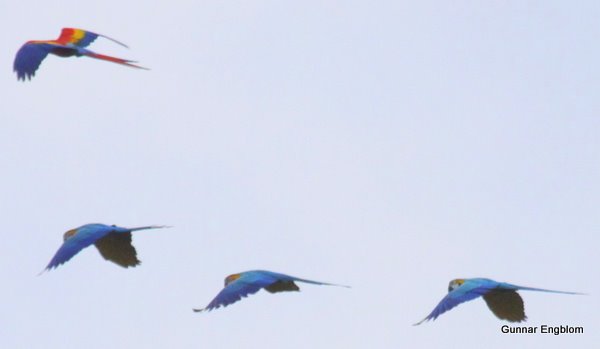 Scarlet Macaw Ara macao and Blue and Yellow Macaw Ara araruana.
Scarlet Macaw Ara macao and Blue and Yellow Macaw Ara araruana.
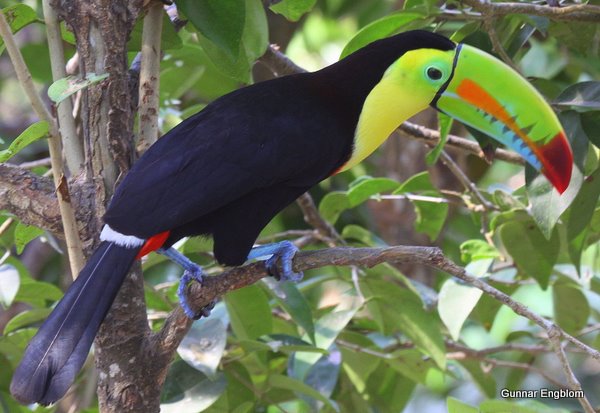 Keel-billed Toucan Ramphastos sulphuratus
Keel-billed Toucan Ramphastos sulphuratus
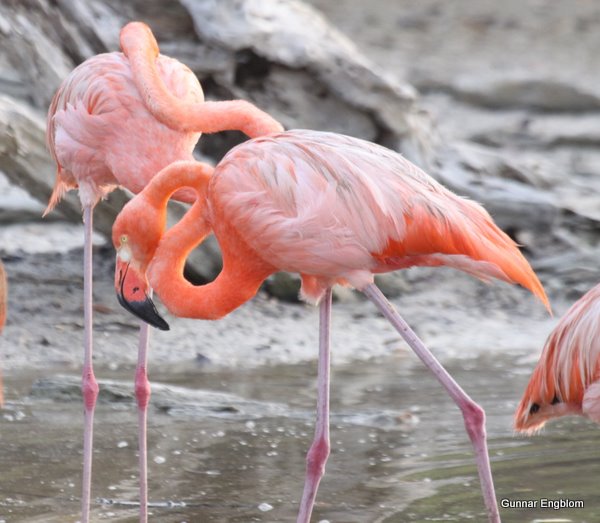 American Flamingo Phoenicopterus ruber. The some 100 flamingos I saw in the mud-pools were all curtailed I believe. This is one of the better looking individuals
American Flamingo Phoenicopterus ruber. The some 100 flamingos I saw in the mud-pools were all curtailed I believe. This is one of the better looking individuals
Paradise not so nice
Sure, it was not a wild experience, as none of these birds could make my life-list – but it was still sort of realization of a boy-hood fantasy of mine living in my own zoo with exotic animals all around. Only that my boyhood fantasy was in Africa and included lions, chimps, giraffes and zebras – and Tarzan tree-houses…..
Underneath this paradisaic surface, there was something wrong. We were taken via a board walk through the mangrove to a proper zoo with cages in very poor condition – and a quite rustic aquarium – that also had seen better days. What was this place?
After coming back to Peru yesterday I searched on the internet and found that the island belongs to a certain Gabriel Durango who fell in love with the island and little by little turned it into a zoo in the 80s. According to a recent report by the authorities some animals have been released from their cages since it became to expensive to feed them and this way letting them search for their own food. The report (page 92-97) talks of negligence and lost animals between the two visits with two years apart, as well as addition of additional species introduced without prior permit. A legal process against Sr Durango has commenced according to the page. The report additionally lists all the introduced species on the island.
Turns out that my boyhood dream was a very irresponsible and unpractical way of keeping animals. How could I know, I was only 8!
Let’s hope though that a more proper management of the island zoo can be made in the near future. Decameron, who owns the hotel, only lease the hotel area – and has little to do with the actual zoo – although they do run the dolphin show – with a 40 year old dolphin named Fiona and the young Camilla who almost has been adopted by Fiona, may be able to pay a larger role.
Family birding
In spite of these reservations of the management of the zoo we absolutely loved our 5 night stay at Isla Palma. All the family were birding a little bit, but mostly we enjoyed the beach, the dolphins, the snorkeling and the kayaking. Really a perfect spot to introduce the family to nature watching. As mentioned on my blog birderfamily – when birding with kids break the rules. To get the kids interested in birds, it does not have to be wild experiences. Zoo:s pay an important educational role. The nearness to the animals gets them interested.
I even got a life bird! Yes, the mystery Myiarchus in my last post was a Panama Flycatcher.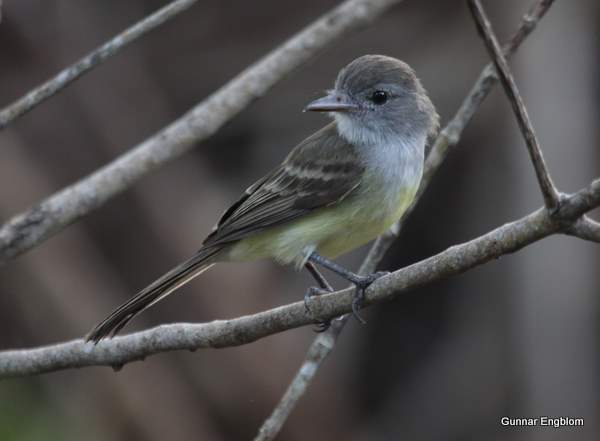
This bird came right in to playback when I planyed the song in the mangroves.
The individual photographed in my last post never made the same song, but I did hear the song in this area and saw the bird make a call note identical to the bird in the mangrove that can be described as: trrrrr-chup, sometimes doubled the second note. Also a more liquid short soft call to me recalling that of Yungas Manakin tchu-eep! was also heard in both places.
I also saw another life bird:
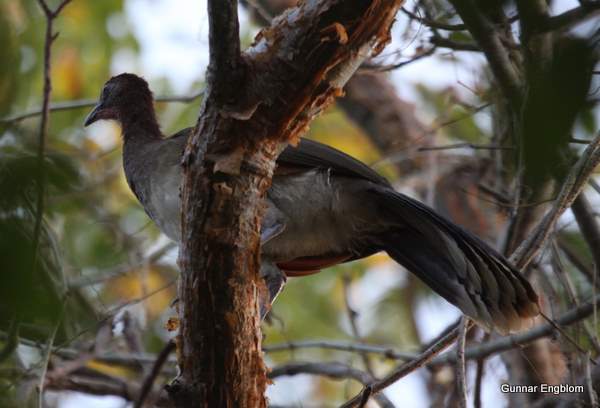 Chestnut-winged Chachalaca. I saw around 30-40 of these in total, and it would not surprise me if they breed on the island. The report above mentions 150 individuals in total. But, it is an introduced species, albeit free-flying, it is being fed with feeders here and there. So reluctantly, I decided not to count this one yet. I am saving to see a proper one at Isla Salamanca National Park on Kolibri Expeditions two-week Colombia tour in April.
Chestnut-winged Chachalaca. I saw around 30-40 of these in total, and it would not surprise me if they breed on the island. The report above mentions 150 individuals in total. But, it is an introduced species, albeit free-flying, it is being fed with feeders here and there. So reluctantly, I decided not to count this one yet. I am saving to see a proper one at Isla Salamanca National Park on Kolibri Expeditions two-week Colombia tour in April.
I did however get a very good bird for my South America list.

I had never seen White-crowned Pigeon in South America before. This Pigeon has a good population in the mangrove not only on Isla Palma but also on neighboring islands. It just barely gets into South America on the off coast islands in Colombia.
Finally a gallery with wild birds I saw on Isla Palma. Not bad really – on a non-birding holiday.
 Mangrove Black Hawk Buteogallus anthracinus subtilis
Mangrove Black Hawk Buteogallus anthracinus subtilis Brown Pelican Pelicinus occidentalis
Brown Pelican Pelicinus occidentalis  Whimbrel Numenius phaeopus
Whimbrel Numenius phaeopus 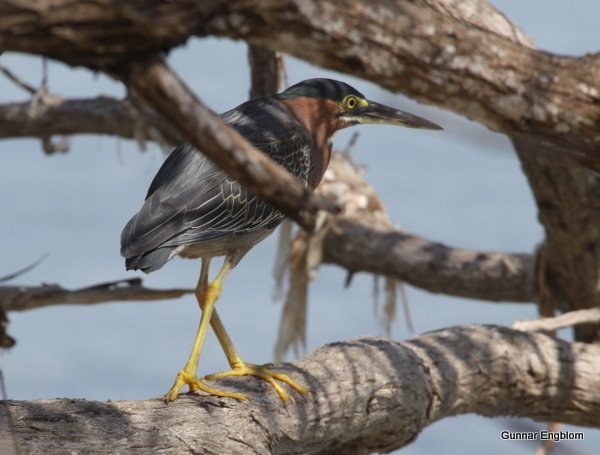 Green Heron Butorides virescens is a good species for South America as it only occurs in the Northern part of the continent and is replaces elsewhere by the sister species Striated Heron.
Green Heron Butorides virescens is a good species for South America as it only occurs in the Northern part of the continent and is replaces elsewhere by the sister species Striated Heron.
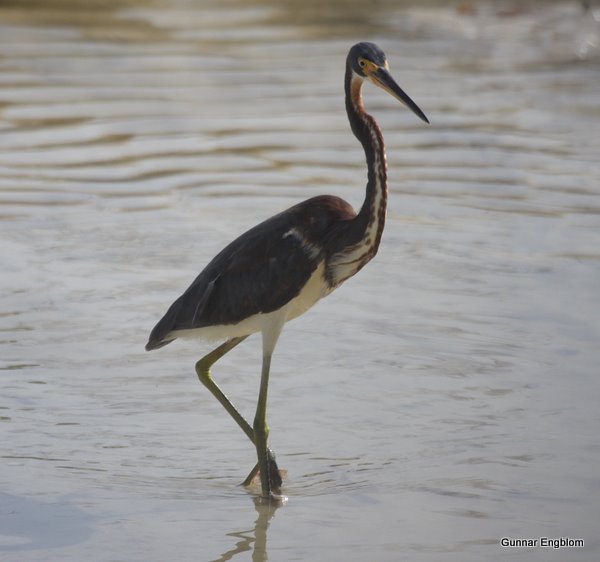 Tricolored Heron Egretta tricolor. My daughter loved the fact that this was her Heron, as I mentioned it is also called “Luciana” Heron.
Tricolored Heron Egretta tricolor. My daughter loved the fact that this was her Heron, as I mentioned it is also called “Luciana” Heron. 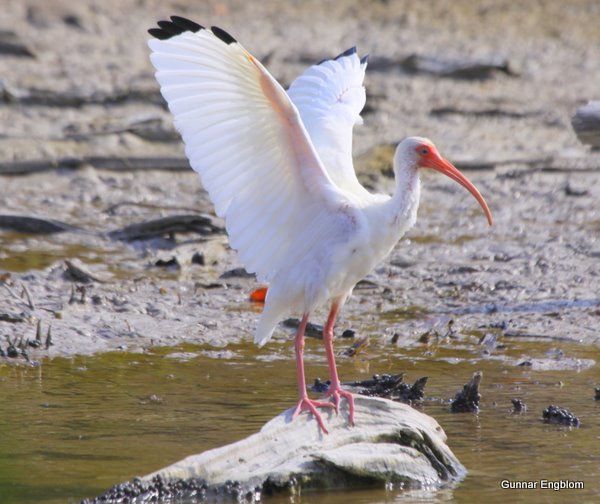 White Ibis Eudocimus albus
White Ibis Eudocimus albus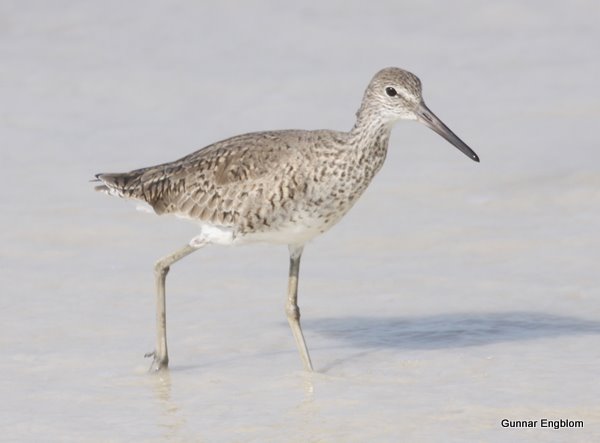 Western Willet Tringa semipalmata inornata. The eastern and western subspecies of Willet are actually quite different from each other and will soon be split. See The Shorebird Guide
Western Willet Tringa semipalmata inornata. The eastern and western subspecies of Willet are actually quite different from each other and will soon be split. See The Shorebird Guide (affiliate link) by Michael O’Brian et al how to identify them.
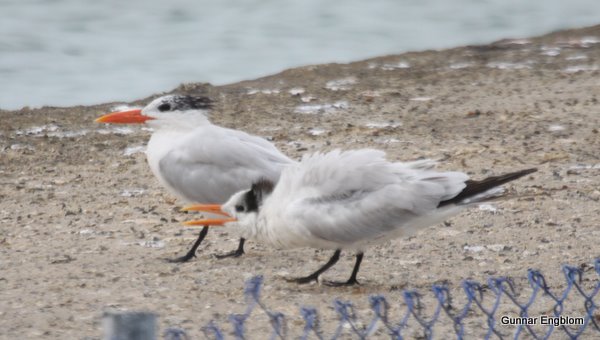 Royal Tern Thalasseus maximus
Royal Tern Thalasseus maximus
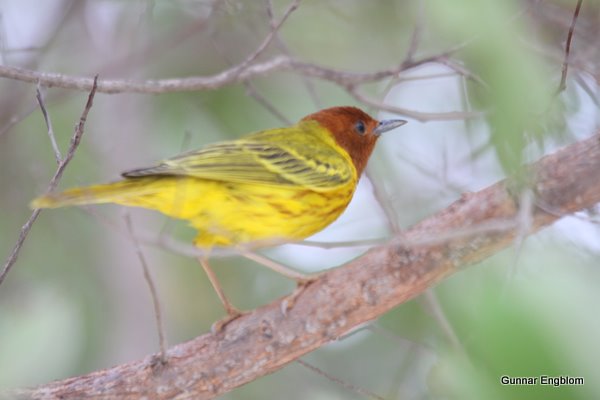
Mangrove Yellow Warbler Dendroica petechia. The Yellow Warbler complex consists of no less than 35 different subspecies. In mangroves (erithachorides group) and on the Caribbean islands (petechia or Golden Warbler group) there are resident races – which in some literature are split as Mangrove Warbler as opposed to the migrating Yellow Warbler aestiva group. 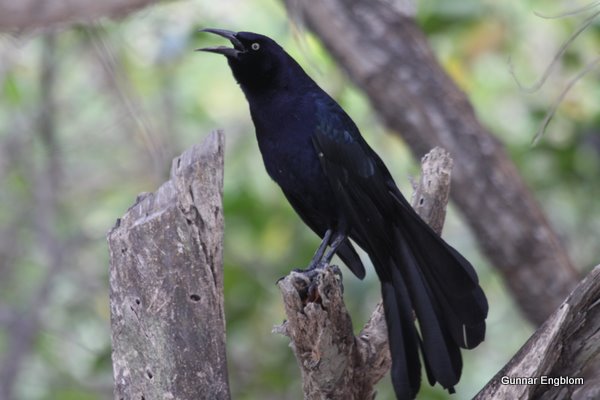 Great-tailed Grackle Quiscalus mexicanus. They were funny to watch as they approached the breakfast tables and sometimes stealing food in unattended moments. Luciana and Anahi gave them bread.
Great-tailed Grackle Quiscalus mexicanus. They were funny to watch as they approached the breakfast tables and sometimes stealing food in unattended moments. Luciana and Anahi gave them bread.

Congratulations for your Panama Flycatcher out of Panama! Your photo of the White-crowned Pigeon is very good!